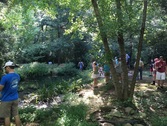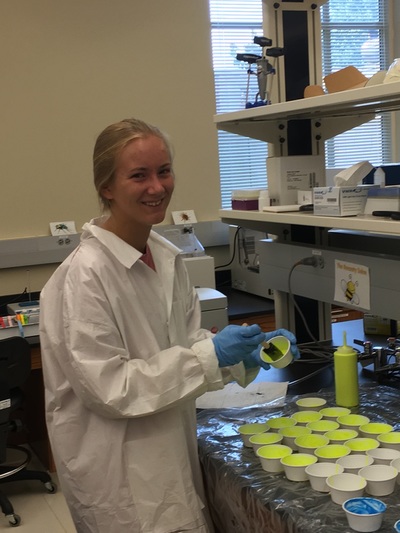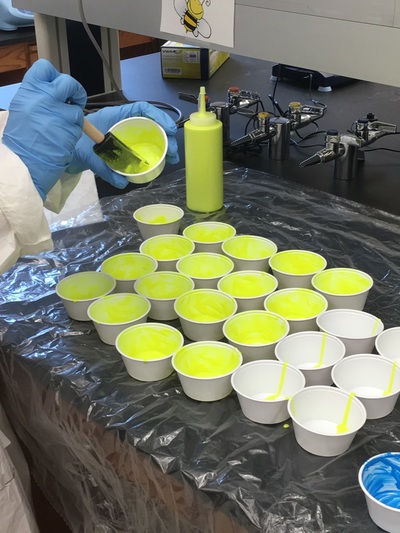 UA Arboretum attracts a crowd at the 2016 Open House UA Arboretum attracts a crowd at the 2016 Open House We are getting ready to undertake a local bee biodiversity inventory at the University of Alabama Arboretum, a beautiful spot off of campus that is undergoing continual improvement thanks to director Monica Watkins. As part of this improvement, we hope to get a baseline assessment of bee biodiversity across the Arboretum, which includes pine and oak/hickory forest, a community garden, wildflower garden, and open areas with lots of general floral and habitat resources that should be great for bees. Ideally, bee habitat availability will increase at the Arboretum over time, and we would like to see how diversity tracks improvements.
In general I try not to collect insects I do not intend to use for what I consider informative research (i.e. benefit must outweigh the cost). I think the efforts here are warranted, because we want to know how well conservation efforts (e.g., increasing bee habitat and floral resources) are working at the Arboretum, we want to be able to compare and integrate results with larger survey efforts, and we certainly want to know something about which species of bee we even have in central Alabama, data on which is seriously lacking. I would not be surprised to find new records, or perhaps even new species! This type of data is valuable for conservation. Further, we will have these bees forever, and once identified will be kept in a freezer, where we might eventually be able to use them for additional research, such as molecular genetics, or pathogen studies to learn more about things that may be harming bees. Finally, we are only conducting the study at a small scale, and won't be collecting too many bees so are unlikely to affect the larger bee population. Studies at much greater intensity and scale have generally found scientific collecting to have very little impact on bees abundance, diversity, and community structure.
Overall, we hope to learn a lot about what bees are coming to the Arboretum throughout the year, and how the abundance and diversity of the bees changes as habitat management starts to increase habitat diversity! Comments are closed.
|
Lozier Lab NewsDispatches from the lab and field! Archives
March 2023
Categories
All
|


 RSS Feed
RSS Feed